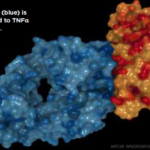SAN DIEGO—The U.S. Food & Drug Administration (FDA) approved an array of therapies with new and expanded indications in rheumatology this past year, an FDA official said in a session at ACR Convergence 2023.
“We have had another busy year at the FDA,” said Eric Gapud, MD, PhD, medical officer with the FDA’s Division of Rheumatology and Transplant Medicine. “We have approved new indications and new routes of administration for previously approved drugs and expanded indications to include new pediatric populations.”
In the session, Update & Safety Issues on Recently Approved Agents for Rheumatic Disease, Dr. Gapud described new approaches to approval for intravenous (IV) secukinumab for psoriatic arthritis (PsA) and other conditions, and a pediatric PsA indication for subcutaneous abatacept and etanercept.
Those expanded indications came in a year that also included approval of canakinumab, an interleukin (IL) 1 inhibitor, for gout flares and sarilumab, an IL-6 inhibitor, for polymyalgia rheumatica (PMR). Other approvals included colchicine to reduce the cardiovascular risk for patients with atherosclerotic cardiovascular risk disease and a slate of new biosimilars.
New Approach for Secukinumab Dose Determination
For IV secukinumab for PsA, ankylosing spondylitis (AS) and non-radiographic axial spondyloarthropathy (nr-axSpA), the FDA reviewers allowed a new approach, called Model Informed Drug Development (MIDD), in which pharmacokinetic modeling was used to estimate the intravenous dosing regimen that would approximate the exposures already established as safe and effective with subcutaneous dosing.
They settled on a specific exposure of intravenous dosing that corresponded to the established 150 mg and 300 mg subcutaneous dose. The FDA was satisfied that it was a therapeutically appropriate dose that would be effective, Dr. Gapud said.
For safety, FDA reviewers were able to leverage safety data with the approved 150 and 300 mg of subcutaneous dosing because the exposure with the selected IV dose is within the approved subcutaneous range of exposure.
This approach was considered appropriate for secukinumab, Dr. Gapud said, because of the drug’s linear pharmacokinetics, meaning its rate of clearance stays constant rather than changing with the dose. In addition, the IV formulation to be marketed uses the same four-week interval as the approved subcutaneous regimen and clinical experience and pharmacokinetic data are available.
“It is important to note that this approach was considered applicable in this unique case based on the totality of data available from the extensive secukinumab development program and may not be generalizable to other subcutaneous-to-IV conversion programs,” Dr. Gapud said.



